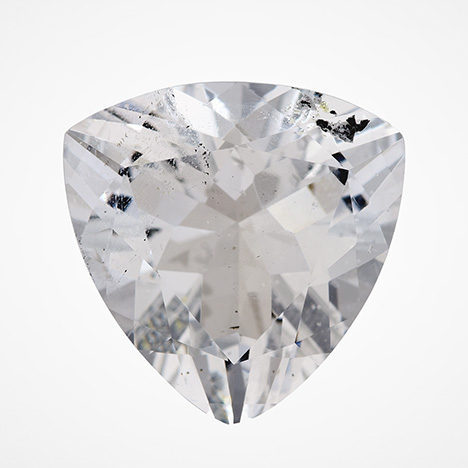Yellow Fluid Inclusions in Transparent Sodalite

The authors recently examined a 7.17 ct transparent, near-colorless sodalite submitted for identification service (figure 1). Sodalite is typically encountered as a semitransparent to opaque, violetish blue stone with white calcite veining resembling lapis lazuli.
Hackmanite is the sulfur-bearing variety of sodalite exhibiting tenebrescence (D. Kondo and D. Beaton, “Hackmanite/sodalite from Myanmar and Afghanistan,” Spring 2009 G&G, pp. 38–43). Tenebrescent minerals reversibly change color when exposed to UV light—from light purple to saturated purple, in the case of hackmanite. While this stone showed the strong orange fluorescence reportedly found in hackmanite, no change in color was observed. This was perhaps due to the short exposure time during testing.

Microscopic observation revealed greenish yellow two-phase fluid inclusions reminiscent of petroleum in quartz (figure 2). Unlike petroleum in quartz, the fluid inclusions were inert to long-wave UV light. Raman spectra of the gas bubble and surrounding liquid were matched to gaseous hydrogen sulfide and hydrogen sulfide in solution, respectively. Methane-related peaks were also present in the liquid phase. These sulfur-rich fluid inclusions provided interesting geological evidence of the stone’s formation, making this rare sodalite even more exceptional.



